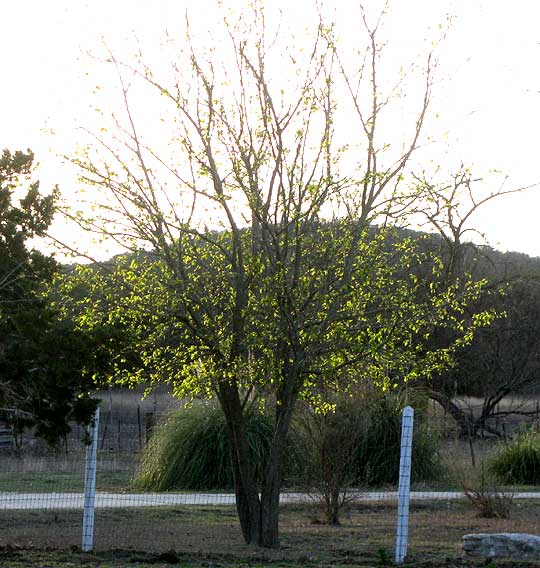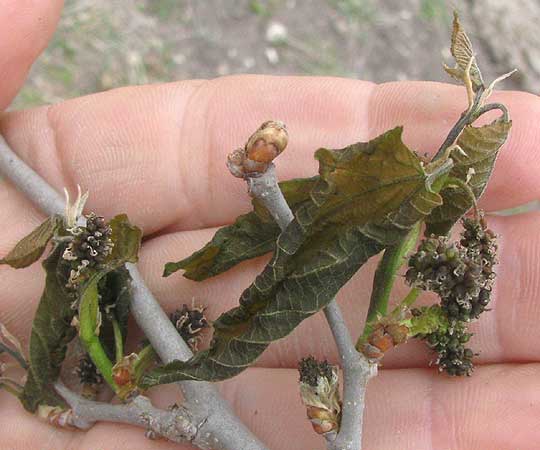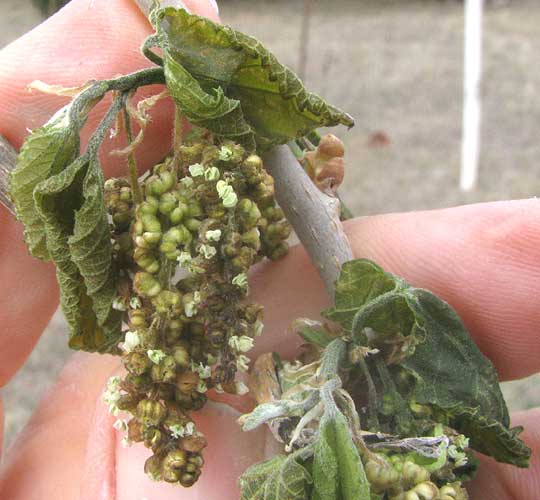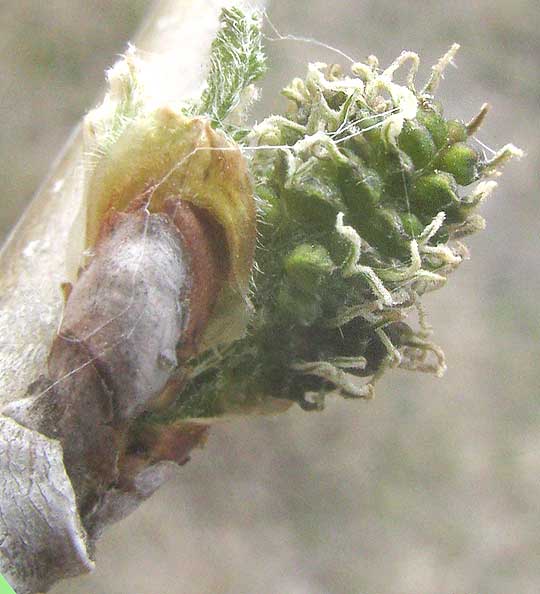Excerpts from Jim Conrad's
Naturalist Newsletter
from the March 31, 2013 Newsletter issued from the Frio Canyon Nature Education Center in northern Uvalde County, southwestern Texas, on the southern border of the Edwards Plateau; elevation ~1750m (~5750 ft); N29.62°, W99.86°; USA
WHITE MULBERRY TREES FROST-NIPPED
One afternoon this week the temperature rose to 95°F (35°C), but then a couple of mornings later the grass was white with frost. At dusk before the morning of the frost I was so struck by the prettiness of the White Mulberry tree in front of the house with its fast-expanding leaves and flowers luminously backlit by the setting sun that I took the picture shown below:

Two days later it was clear that that night's frost had hurt each of the six White Mulberries around the cabin. Look at the leaves and spikes of female flowers topped with fuzzy, white stigmas below:

There you see leaves that before the frost were yellow green and spreading wide like fans but now are darkened and curling upon themselves. The female flowers are turning brown, too. Each spike of female flowers was destined to become a sweet, succulent mulberry before the frost, but now it's clear that this year's mulberry crop will be severely diminished, if there is one at all. Mulberry trees bear separate male- or female-flowered spikes. Usually trees are either entirely male or female, but sometimes both kinds of spikes appear on the same tree. You can see white, pollen producing anthers on dangling male-flowered spikes next to leaves and stems equally frost-damaged as those in the last picture below:

Of the several trees planted around the cabin, some were more advanced with their flowering than others. Maybe the later-flowering ones will produce some mulberries later in the season. Also, here and there along stems of even the most damaged trees certain buds now are issuing stunted, late-flowering, but apparently undamaged flowers and leaves, as shown below:

White Mulberries, MORUS ALBA, are introduced from northern China. In other words, they did not evolve to be adapted to our kind of wildly changing climate, nor for a globally warming planet. Our native plants, even those also flowering when the White Mulberries were blooming, don't seem to have been hurt by the frost. They have evolved adaptations that served them well on the morning of the mulberry-killing frost.